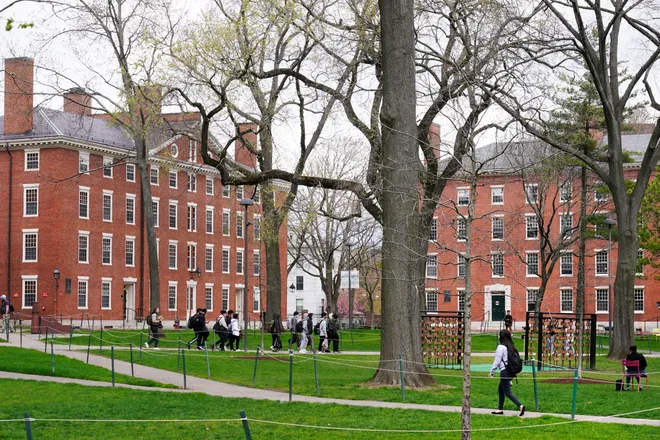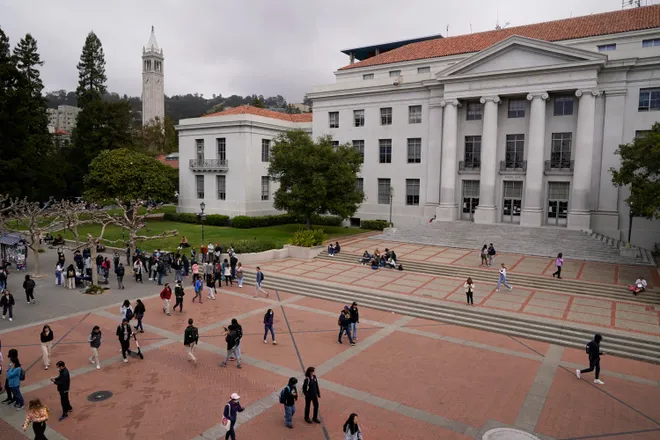The young are now most unhappy people in the United States, new report shows
Happiness and well-being among Americans has recently plummeted and a new cohort is leading the downward spiral: young people.
The World Happiness Report released Wednesday showed that self-reported data from those under 30 knocked the U.S. out of the top 20 happiest countries for the first time since the annual report was initially published in 2012.
The analysis, compiled by Gallup, the United Nations and other groups, found that, among the top factors contributing to the rapid decline, were young people’s dissatisfaction with their support system; their living situation; waning confidence in the government and a sense that they have less freedom to make life choices, said Lara Aknin, an editor of the report and a professor of social psychology at Simon Fraser University.
Young Americans who spoke with USA TODAY pointed to the economy, the cost of housing, student loan debt, political polarization, social media, climate change and the war in Gaza as reasons for their unhappiness and disillusionment.

Recent studies have shown suicide rates among young people in the U.S. has surged, especially after the COVID-19 pandemic. Experts have also begun to sound the alarm over what many consider to be an epidemic of loneliness among America’s teenagers and young adults, which has coincided with a rise in virtual school and remote work. But researchers agree that there’s no one cause for the decline, rather a cluster of factors that’s driving young people to dissatisfaction levels associated with those who typically are at least a decade older.
“Youths have reached the point of a midlife crisis – today,” said Jan-Emmanuel De Neve, professor of economics and behavioral science at Oxford’s Saïd Business School and a publisher of the World Happiness Report. “That's really disconcerting because then, obviously, it begs the question, where's it going to go from here?”
What is causing the dissatisfaction?
Young millennials and Gen Zers said everything from crippling debt and inflated rent prices to social media's comparison culture has left them exhausted and unsatisfied.
Ashlie Marchant, a sophomore at the University of Central Florida, said social media was the biggest cause of dissatisfaction in her life and the lives of her friends. Along with deleting TikTok off her phone, Merchant, sitting in a public park with a paperback novel, said she's embraced physical media like film photography and vinyl records in an effort to stave off a compulsion to doom scroll.
“I’m trying to lean off of social media,” Marchant, 20, said. “It’s so easy to get caught up in it, and all it does is make me unproductive and upset.”

Luke Liptak, a recent graduate from Savannah College of Art and Design, said though he’s not unhappy, he is buried in student loans and is struggling to find work in his field of study, computer animation.
“I think a big part of this is feeling unsuccessful,” the 23-year-old said. “There's a very high expectation on young people to get married by this age or buy a house at this age, but it’s not realistic anymore.”
Mental health clinics across the country have reported trends similar to those identified in the World Happiness Report.
David Rosmarin, the founder of the Center for Anxiety and an associate professor at Harvard Medical School, said the study confirmed what he’s seen on the ground. He said the severity of mental health illnesses and issues among younger patients has worsened since the pandemic, leading many to drop out of school or lose their jobs.
“I can't count the number of college students coming to our programs who are losing semesters because of their mental health,” said Rosmarin, whose clinics operate in three states across the Northeast. “Every dean who I've spoken to has an inbox full of mental health leave requests.”
More: Youth and social mediaOhio, more states push for social media laws to limit kids’ access: Where they stand
Will this only get worse?
Researchers say one of the best predictors of adult happiness is happiness as a child and as a teenager. And happiness and satisfaction levels are related to people’s physical health, academic achievement, civic engagement and financial earnings.
This correlation is fueling concerns that as teenagers and young adults in the U.S. get older, their dissatisfaction may only worsen, as history suggests.
Generally, happiness is greatest among young people and drops to its lowest around middle age (40-60) before climbing up again as people reach retirement and old age – a phenomenon commonly called the U-shape. While a general flattening has been a yearslong trend in the U.S., this year the shape has become unrecognizable, experts said.
“Honestly, I look at these data with terror, not just because of what they reveal about our country right now, but what they will reveal about our country in the future unless we change this pattern,” said Laurie Santos, a professor of psychology at Yale University.
Aknin, the Canadian professor, said it's unknown what the results on this trend will be or whether it will even continue.
"If people are starting low, is it only going to get worse before it gets better? I'm not sure we know," she said. "I think there might be multiple outcomes."

Optimism for the young
Santos, who teaches Yale's most popular class, “Psychology and the Good Life,” said that while the report’s findings were similar to what she’s found in her interaction with students – increased isolation, stress and burnout – there is room for optimism.
First, not all countries saw plummeting levels of well-being. Young people in central and eastern Europe, as well as parts of sub-Saharan Africa, reported increases in happiness, the report showed. Experts said it’s not clear why these regions are experiencing the opposite trend as the U.S., Canada and other English-speaking counties, but their results show this is not an entirely global phenomenon.

“I think the record, while depressing when it came to U.S. teens, was actually quite hopeful because it tells us it doesn't have to be the pattern, and with the other factors we can switch that pattern around completely,” Santos said.
Additionally, research has long shown there are changes people can make in their own lives to improve their levels of happiness and satisfaction, like more in-person social behavior, self compassion and freeing up time separate from work, school and other obligations, Santos said. She and other experts added that while there should be more focus on structural changes, young people are not at the mercy of external factors and can improve their own well-being.
“Individual behaviors, the data suggests, have a significant impact on people's happiness,” Santos said. “And what I try to convey to young people in my courses, despite these statistics, is that they have agency and they can, with their own individual actions, make changes that will allow them to do better.”
Disclaimer: The copyright of this article belongs to the original author. Reposting this article is solely for the purpose of information dissemination and does not constitute any investment advice. If there is any infringement, please contact us immediately. We will make corrections or deletions as necessary. Thank you.





